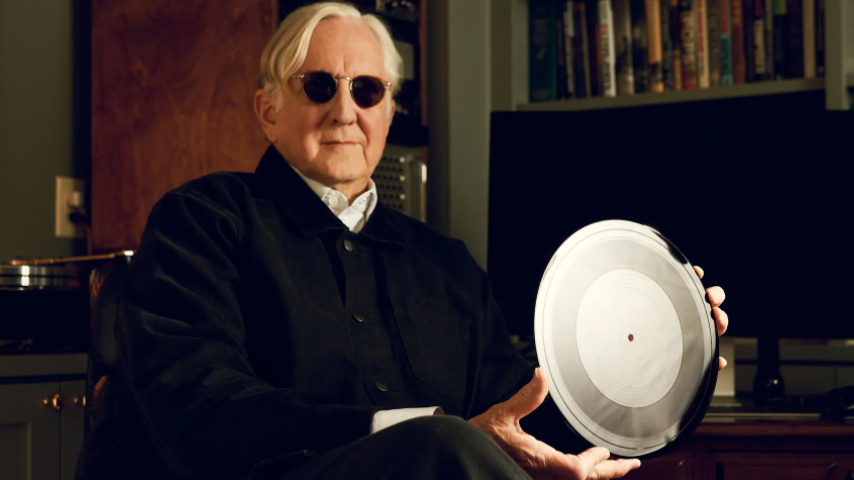There's a new music format that aims to deliver "the pinnacle of sound"
The Ionic Original format is a CD-Vinyl hybrid

Award-winning record producer and musician, T Bone Burnett, has announced that he is developing a new physical music format called Ionic Original. The format combines some of the materials used in both vinyl and CDs to create durable, one-of-a-kind analogue discs. Yes, really.
Unlike traditional vinyl LPs made of PVC, and CDs, which contain plastic with a layer of metal, Ionic Originals will consist of "lacquer painted onto an aluminium disc, with a spiral etched into it by music...which can be heard by putting a stylus into the spiral and spinning it".
T Bone Burnett, best known for his Grammy-winning work on Raising Sand by Alison Kraus and Robert Plant, as well as the soundtracks for O Brother, Where Art Thou? and The Big Lebowski, has already begun using the technology for a project with Bob Dylan in which he is re-recording some of the singer's classic songs. This material is expected to make up the debut release of Ionic Original, though as yet there is no launch date.
Once they are available, distribution of the discs, which Burnett describes as "the pinnacle of sound", will be handled by his own, newly-formed company, called NeoFidelity Inc. Burnett hopes that the long gestated project can go some way toward "reset[ing] the valuation of recorded music".
In a press release about the launch, Burnett said: "An Ionic Original is the pinnacle of recorded sound. It is archival quality. It is future proof. It is one of one. Not only is an Ionic Original the equivalent of a painting, it is a painting. It is lacquer painted onto an aluminium disc, with a spiral etched into it by music. This painting, however, has the additional quality of containing that music, which can be heard by putting a stylus into the spiral and spinning it.
"When describing the quality that raises analogue sound above digital sound, the word 'warmth' is often used. Analogue sound has more depth, more harmonic complexity, more resonance, better imaging. Analogue has more feel, more character, more touch. Digital sound is frozen. Analogue sound is alive."
This isn't Burnett's first foray into audio formats. Back in 2008 he developed Code (also known as ΧΟΔΕ), a high-fidelity audio technology intended to produce discs with sound quality comparable to studio masters, which would "democratise high-fidelity" and combat the prevalence of MP3 as the dominant format for listening to music.
The latest hi-fi, home cinema and tech news, reviews, buying advice and deals, direct to your inbox.
Code discs could be played back on any DVD drive and delivered 24-bit/96 kHz PCM audio but also included files in 24-bit/96 kHz WAV, AAC and MP3 for transfer to portable music players and computers. Releases included John Mellencamp's Life, Death, Love and Freedom and Will Dailey's Torrent, Volumes 1 & 2.
It's fair to say we don't hear too much about the Code format today, so it remains to be seen if Ionic Original will fare any better.
MORE:
The tech endangered list: are these devices and formats the next to go?
Mary is a staff writer at What Hi-Fi? and has over a decade of experience working as a sound engineer mixing live events, music and theatre. Her mixing credits include productions at The National Theatre and in the West End, as well as original musicals composed by Mark Knopfler, Tori Amos, Guy Chambers, Howard Goodall and Dan Gillespie Sells.
